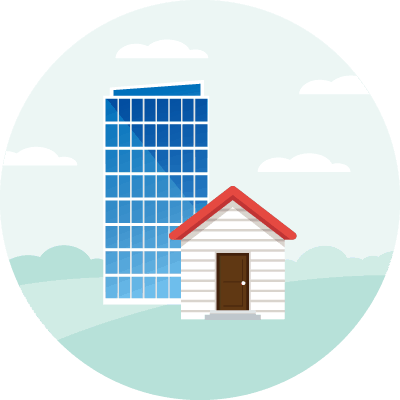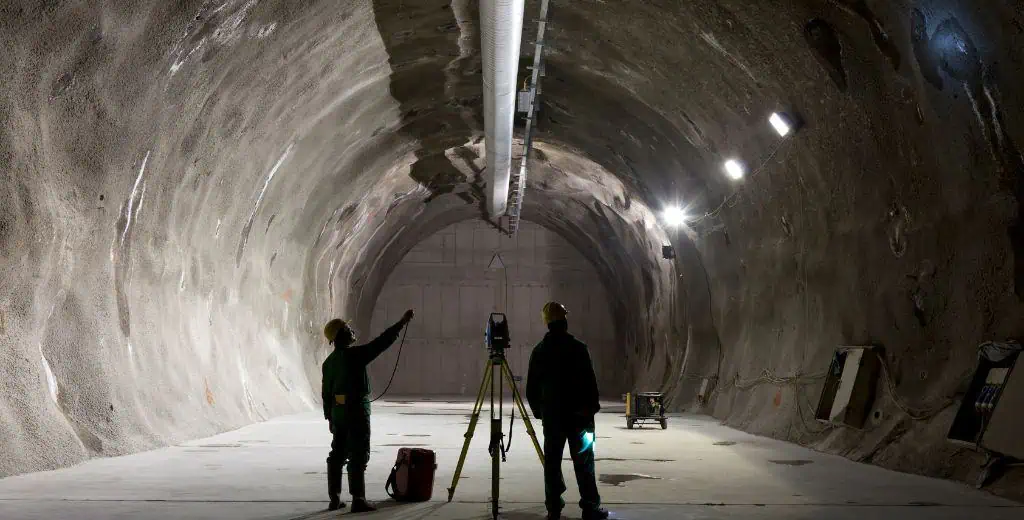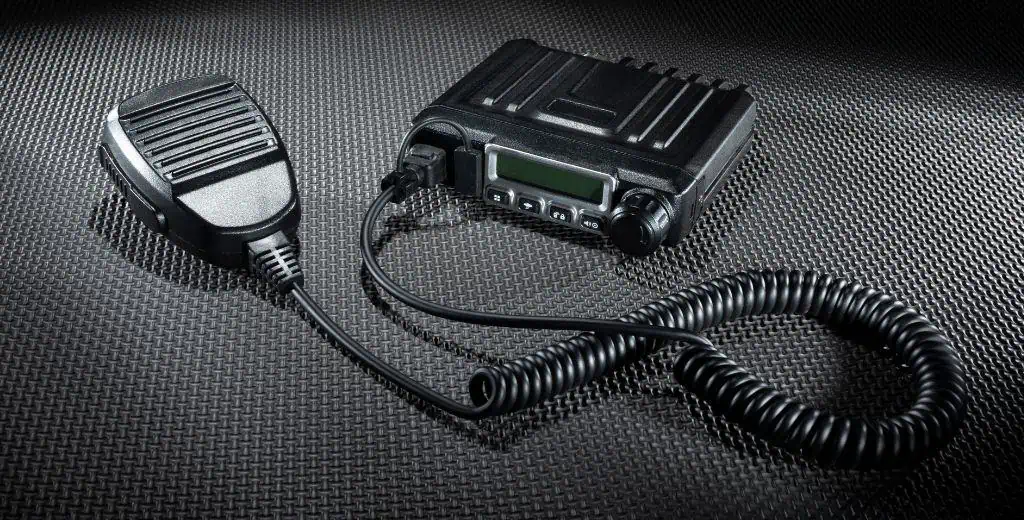What Are Underground Bunkers?
Shortcuts: Underground Bunkers
- Underground bunkers are specialized structures built below ground for protection and shelter, whether natural or man-made.
- They peaked during the Cold War era due to fears of the then-likelihood of nuclear, biological, and chemical warfare.
- FEMA has created guidelines for designing and building shelters, including bunkers, but some jurisdictions may enforce more specific guidelines.
- Today, some bunkers have been repurposed as museums, storage vaults, laboratories, or data centers.
- Underground bunkers can impact property values and have unique considerations in real estate transactions.
Understanding Underground Bunkers
Underground bunkers are subterranean (i.e., below ground level) structures, once primarily associated with military installations or Cold War-era fallout shelters. They have recently become a sought-after feature in certain niches of residential and commercial properties.
Underground bunkers can range from basic storm cellars to elaborate survival complexes. They’re designed to provide protection from various threats, including natural disasters like tornadoes or hurricanes, man-made catastrophes such as nuclear incidents, or even long-term societal disruptions. The level of sophistication can vary dramatically, from simple reinforced concrete rooms to fully equipped living spaces with air filtration systems, independent power sources, and long-term food and water storage.
Bunkers have a long history, dating back to ancient fortifications. They gained prominence during World War I and II as military defensive structures. The Cold War era saw a surge in both military and civilian bunker construction due to nuclear threat fears.
In 1961, President John F. Kennedy addressed the nation about civil defense, stating,
“In the event of an attack, the lives of those families which are not hit in a nuclear blast and fire can still be saved if they can be warned to take shelter and if that shelter is available.”
This speech spurred a wave of private bunker construction across America. Today, bunkers continue to evolve, serving various purposes from emergency shelters to luxury survival spaces, reflecting changing global threats and technological advancements.
Types of Underground Bunkers
Underground bunkers in real estate can be broadly categorized into several types:
- Residential bunkers: These are typically integrated into or adjacent to existing homes. They can range from basic panic rooms or storm shelters to more elaborate living spaces designed for extended occupancy.
- Stand-alone survival bunkers: These are purpose-built structures, often on rural properties, designed for long-term occupancy in extreme scenarios. They may include extensive life support systems, storage areas, and even luxury amenities.
- Community bunkers: These are larger structures designed to house multiple families or communities. They’re often sold as part of a shared ownership model, similar to a timeshare.
- Repurposed military bunkers: In some cases, decommissioned military bunkers have been converted into private residences or survival complexes.
- Corporate or institutional bunkers: While less common in the public real estate market, some companies and institutions have invested in bunker facilities for continuity planning.
Uses of Underground Bunkers
Underground bunkers, originally designed for protection during wartime, have evolved to serve a variety of purposes in modern times.
Their primary function remains to provide shelter and safety during emergencies, whether natural disasters or man-made crises. Many homeowners in disaster-prone areas view bunkers as essential safety features akin to smoke detectors or security systems.
Beyond emergency preparedness, tech companies increasingly use underground facilities to house sensitive information and critical IT infrastructure. The constant temperature and humidity levels in underground environments make them ideal for preserving delicate electronic equipment.
This characteristic also makes bunkers attractive for scientific research and sensitive experiments. Their isolation from external interference makes them suitable for projects requiring minimal vibration or electromagnetic disturbance.
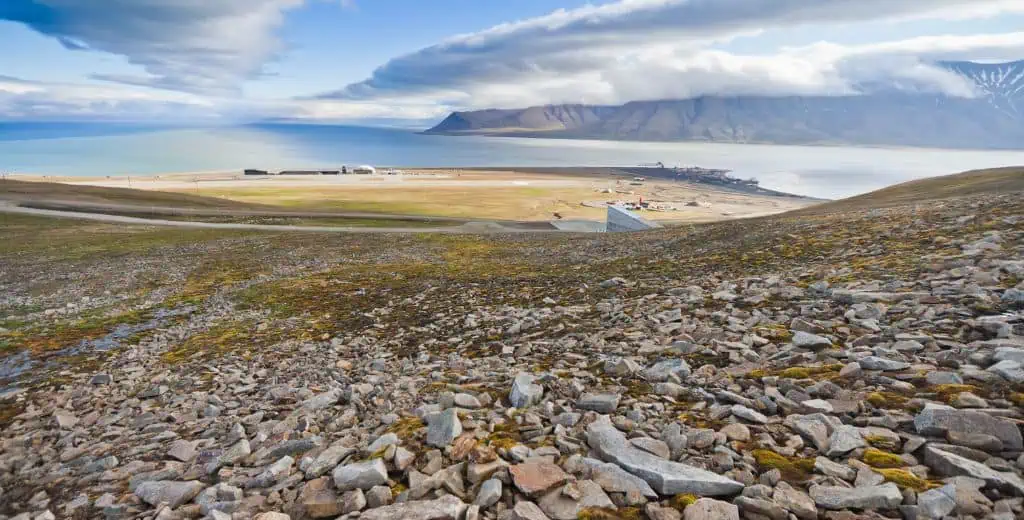
The Svalbard Global Seed Vault, in the distance
Bunkers may also serve as long-term storage for crops and seeds. The Svalbard Global Seed Vault in Norway, often called the “Doomsday Vault,” is a prime example, preserving millions of seed samples in a former coal mine. This bunker ensures the preservation of plant genetic resources for future food security and agricultural biodiversity.
Today, bunkers and the Cold War-era raison d’etre for their construction are mainstays in popular consciousness. Bunkers feature prominently in movies like “Blast from the Past,” TV shows like “American Horror Story: Apocalypse,” books like “Wool” by Hugh Howey, and video games like “Fallout.”
Repurposed Bunkers in Real Life
Some bunkers have been repurposed for other uses, leading to some fascinating real-world applications:
- United States: A former Atlas missile silo in Kansas has been transformed into the Survival Condo Project, a luxury underground condominium complex. This 15-story-deep structure now houses multimillion-dollar apartments, complete with amenities like a pool, a movie theater, and a rock climbing wall.
- Switzerland: The Sonnenberg Tunnel, originally built as a massive fallout shelter, now serves as both a working road tunnel and an emergency shelter. Only a small section remains dedicated to its original purpose, while the rest has been converted for civilian use.
- Germany: Honecker’s Bunker, once a Cold War-era nuclear shelter for East German leader Erich Honecker, has found new life as a Cold War museum. The bunker opened to the public for tours in 2008 but has since sealed its entrances again after two months due to controversy.
- China: A former bomb shelter in Beijing has been converted into an affordable housing solution. Known as “The Dungeon,” it provides living space for hundreds of low-income residents, albeit in arguably inhumane conditions.
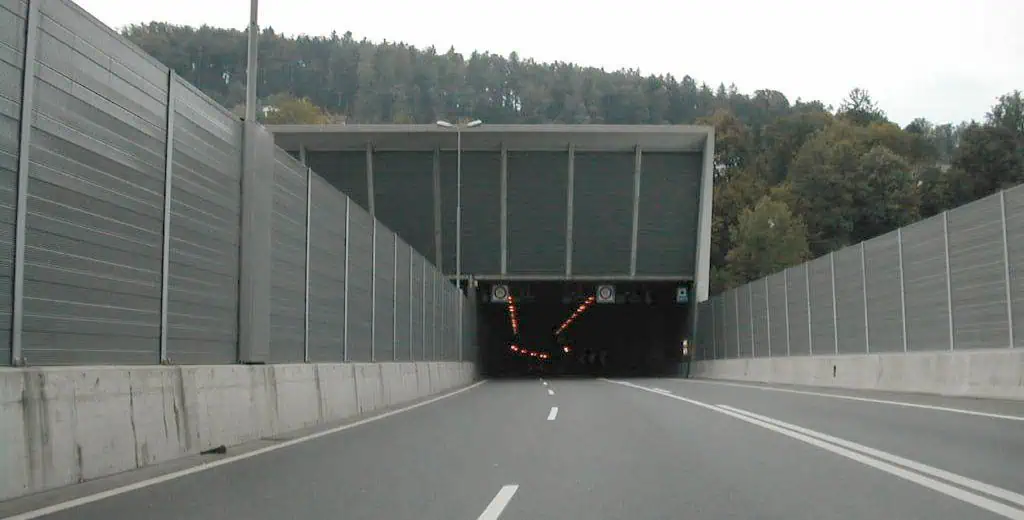
South entrance of the Sonnenberg Tunnel, Switzerland
Building and Designing Underground Bunkers
In the United States, the Federal Emergency Management Agency (FEMA) has instituted certain standards for constructing these structures for security, safety, and livability.
The following information is based on FEMA 453: Design Guidance for Shelters and Safe Rooms. This document provides valuable guidance for the design of protective structures, which includes bunkers.
- Threat and hazard assessment: FEMA emphasizes identifying potential threats and hazards before designing a shelter. This includes considering both natural hazards (such as hurricanes and tornadoes) and human-caused hazards (such as chemical, biological, or radiological incidents).
- Site selection: FEMA recommends considering accessibility, proximity to hazards, and soil conditions. Shelters should be located away from hazardous materials facilities and areas prone to flooding.
- Structural systems: FEMA provides guidance on structural design to resist blast effects, including reinforced concrete and masonry. The document includes tables for minimum wall thicknesses based on explosion threat levels.
- Doors and windows: FEMA emphasizes the importance of blast-resistant doors and windows. For example, it recommends a minimum of 14-gauge steel for door frames and 16-gauge steel for door faces in blast-resistant designs.
- Ventilation and filtration: FEMA provides detailed instructions on setting up ventilation systems, such as using HEPA filters and carbon adsorbers to protect against chemicals, biological agents, and radioactive materials (CBR).
- Emergency power systems: FEMA recommends incorporating emergency power systems in shelter design, including fuel storage and system redundancy considerations.
- Water systems: The document addresses portable water supply and fixed water storage tanks, recommending a minimum of 1 gallon per person per day for drinking and sanitation.
- Communications systems: FEMA emphasizes the importance of reliable communication systems in shelters, including internal and external communications capabilities.
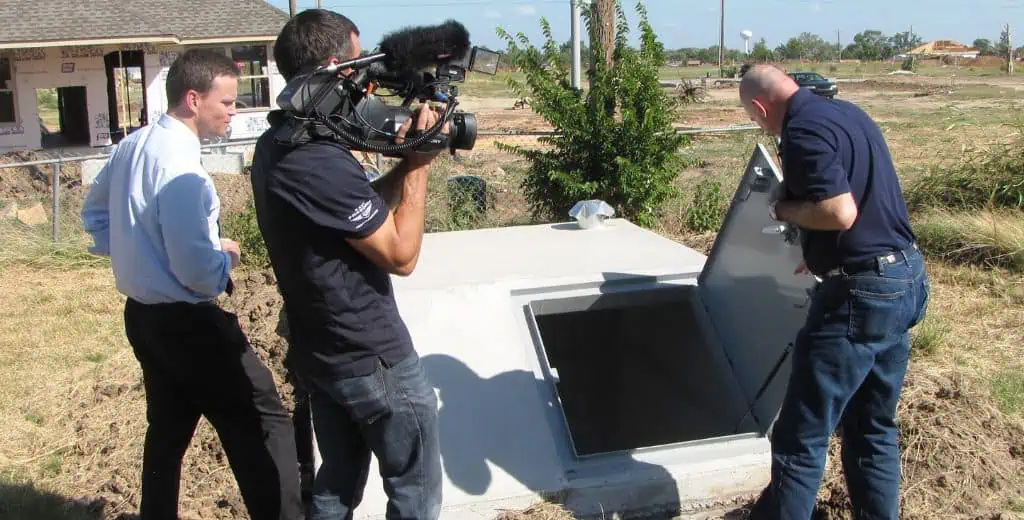
National Archives at College Park – Still Pictures, Public domain, via Wikimedia Commons
Again, note that this FEMA document is designed for a range of protective structures, not exclusively underground bunkers. Specific requirements may vary based on the bunker’s intended use and the degree of protection needed.
Legal Considerations for Underground Bunker Construction
The construction of underground bunkers involves navigating a maze of zoning laws, building codes, and legal considerations. These regulations can vary across different jurisdictions, so property owners and developers must research local requirements before embarking on a bunker project.
Zoning Variations
Zoning laws regarding underground structures can differ dramatically from one area to another. Some key variations include:
- Urban vs. rural: Urban areas often have stricter regulations due to concerns about population density and infrastructure impact.
- Depth restrictions: Some jurisdictions may limit how deep underground structures can be built.
- Size limitations: There may be restrictions on the total square footage of underground structures relative to the above-ground property.
Permit Requirements
Obtaining the necessary permits for bunker construction can be a complex process. Generally, you’ll need to consider permits for excavation, environmental impact assessments, construction, and occupancy.
The specific requirements can vary, but most jurisdictions will require detailed plans and inspections throughout the construction process. Some areas, such as the city of Pleasant Hill, California, also have specific guidelines on fallout shelter construction.
Legal Issues With Undisclosed Bunkers
Failing to disclose an existing bunker during a property transaction can lead to serious legal consequences. Here’s a quick overview of potential issues:
| Issue | Potential Consequence |
| Non-disclosure during sale | Buyer could sue for misrepresentation |
| Unpermitted construction | Fines, forced removal, or difficulty selling |
| Safety violations | Liability for injuries, mandatory upgrades |
It’s always best to be transparent about underground structures when selling a property.
Environmental Regulations
Environmental concerns play a significant role in bunker construction regulations. Key areas of focus include:
- Groundwater protection: Ensuring the bunker doesn’t interfere with or contaminate groundwater sources.
- Soil stability: Verifying that the construction won’t lead to soil erosion or instability.
- Wildlife impact: Assessing and mitigating any potential effects on local ecosystems.
Many jurisdictions require an environmental report or environmental site assessment (ESA) before approving underground construction projects.
Insurance Considerations
Insuring a property with an underground bunker can present unique challenges. For example, many standard homeowners’ policies may not cover underground structures. You may need to purchase specialized or ad hoc insurance to fully protect the investment.
In fact, some insurers state that having a shelter, such as a bunker, does not usually result in discounts or additional coverage on homeowners insurance. This is because a shelter primarily provides personal protection rather than protecting the home itself from damage or destruction.
Consult insurance professionals experienced in unique property features when seeking coverage for a bunker.
Preppers and Underground Bunkers
The prepper community has played a significant role in driving interest and demand for underground bunkers in recent years.
Preppers, short for “preparedness enthusiasts,” are individuals or groups who actively prepare for emergencies, including possible disruptions in social or political order, natural disasters, or other potential catastrophes. Their preparations often include stockpiling food, supplies, and, in some cases, investing in fortified shelters or bunkers.
The modern prepper movement has roots in the Cold War-era civil defense programs but has evolved to encompass a wide range of perceived threats and motivations. Recent FEMA reports indicate that 68% of Americans have taken three or more basic actions to prepare for emergencies, and preppers may constitute a significant portion of this figure.
Preppers’ interest in underground bunkers stems from several key motivations:
- Bunkers offer shelter from a variety of threats, including natural disasters, civil unrest, or even nuclear events.
- Many preppers value the ability to live off-grid for extended periods, which advanced bunkers can facilitate.
- For some, owning a bunker provides psychological comfort, regardless of whether it’s ever used.
- Some view bunkers as a form of “apocalypse insurance” or a unique real estate investment.
- Finally, some prepper-oriented bunker communities offer like-minded individuals the opportunity to prepare collectively.
FAQs on Underground Bunkers
How much does it cost to build an underground bunker?
The cost of adding an underground bunker to a property can vary widely depending on size, features, and location.
The average cost for a 200-square-foot bunker is around $60,000, with typical ranges from $35,000 to $75,000. Smaller bunkers can start as low as $20,000, while larger or more luxurious models can exceed $9 million.
Meanwhile, prefabricated bunkers typically cost between $40,000 and $120,000, not including labor and shipping costs.
In addition, constructing a bunker also involves landscaping considerations, such as land clearing, excavation, and utility hookups. You also need to pay for professional and design costs, including hiring structural engineers and architects.
RELATED: My Two-Year Journey Building a Self-Storage Facility From Scratch
How do you maintain an underground bunker?
Properties with underground bunkers have unique maintenance requirements beyond those of standard homes.
For example, you need to inspect the bunker for water infiltration and maintenance of waterproofing systems, especially if you’re in a flood zone. Leaks can significantly erode the structural integrity of the bunker and accelerate stress or deterioration on its components.
Owners also need to maintain the air quality of the bunker. In most cases, HEPA air filters are adequate, but the disaster or the crisis may require more specialized NBC-grade (nuclear, biological, and chemical) air purification systems.
Finally, you should also check backup power systems, water supply and purification, and communication devices. Access points should also be well-maintained.
How do underground bunkers impact property taxes?
The impact of underground bunkers on property taxes can vary depending on local tax laws and how the bunker is classified.
For example, if the bunker increases the overall value of the property, it could lead to higher property taxes. Similarly, if the bunker is considered habitable space, it might be included in the total square footage of the home, potentially increasing the tax assessment.
In many cases, underground bunkers may not be formally recorded or assessed, especially if they were built without proper permits. However, failing to disclose such structures could lead to legal issues.
References
- Politico, “JFK urges Americans to build nuclear bomb shelters, Oct. 6, 1961.” https://www.politico.com/story/2017/10/06/jfk-urges-americans-to-build-nuclear-bomb-shelters-oct-6-1961-243469
- Time, “inside The ‘Doomsday’ Vault’.” https://time.com/doomsday-vault/
- IMDb, “Blast from the Past.” https://www.imdb.com/title/tt0124298/
- IMDb, “American Horror Story Episode List.” https://www.imdb.com/title/tt1844624/episodes/?season=8
- Goodreads, “Wool (Wool #1, by Hugh Howey).” https://www.goodreads.com/book/show/12287209-wool
- The Verge, “Where to get started with Fallout.” https://www.theverge.com/2024/4/28/24141907/best-fallout-3-4-76-new-vegas-start
- Federal Emergency Management Agency (FEMA), “FEMA 453: Design Guidance for Shelters and Safe Rooms.” https://www.fema.gov/pdf/plan/prevent/rms/453/fema453.pdf
- Ready.gov., “Build A Kit.” https://www.ready.gov/kit
- City of Pleasant Hill Municipal Code, “Chapter 14.65, FALLOUT SHELTERS.” https://www.codepublishing.com/CA/PleasantHill/html/PleasantHill14/PleasantHill1465.html
- McInnis Insurance Agency, Inc., “Tornado Shelters Provide a Different Kind of Home Insurance: Your Safety.” https://www.mcinnisinsurance.com/blog/safety-with-tornado-shelters
- FEMA, “FEMA Publishes Annual Preparedness Survey: Trends Show Americans Becoming Better Prepared.” https://www.fema.gov/press-release/20210318/fema-publishes-annual-preparedness-survey-trends-show-americans-becoming
- HomeAdvisor, “How Much Does It Cost to Build a Bunker?” https://www.homeadvisor.com/cost/safety-and-security/bomb-shelter/
